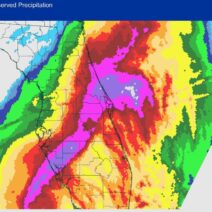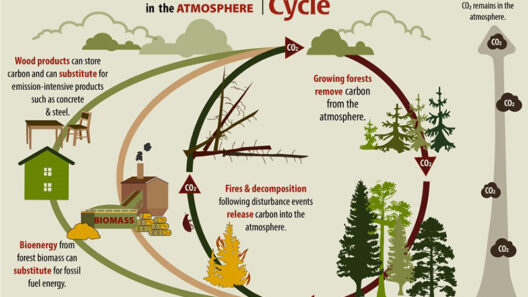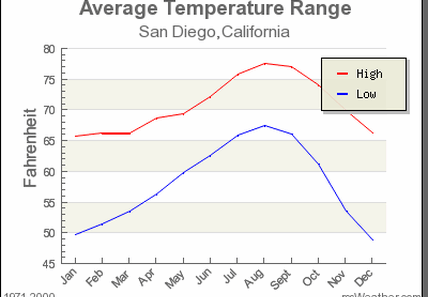Georgia, a state steeped in rich history and vibrant culture, is often celebrated for its southern charm. However, beneath this picturesque façade lies an intriguing and complex climate that embodies the spirit of seasonal change. Known for its mild winters and scorching summers, the Peach State offers a diverse array of weather patterns influenced by its geographical features, ranging from the coastal plains to the Appalachian Mountains.
The climate of Georgia is classified predominantly as humid subtropical, characterized by hot, humid summers and mild winters. This climate type is ideally suited for a variety of flora and fauna, creating a lush environment that bursts with color, especially in the spring and summer months. However, with the advent of climate change, these seasonal patterns are undergoing transformative shifts that warrant closer examination.
Seasonal Overview
Georgia experiences four distinct seasons, each presenting unique weather conditions that often affect local activities, agriculture, and ecosystems. From the warmth of spring to the chill of winter, the seasonal transitions highlight the enchanting variety of the state’s weather.
Spring (March to May)
Spring in Georgia heralds a rebirth, as nature awakens from its winter slumber. March often begins with cool temperatures, typically ranging between 40°F and 70°F. As the season progresses, temperatures rise, drawing people outdoors to witness the splendor of blooming azaleas and dogwoods. Rainfall during this period is abundant, fostering growth and rejuvenation. However, spring also brings severe weather, including thunderstorms and the occasional tornado, particularly in late April and early May.
Summer (June to August)
Summer in Georgia is marked by stifling heat and humidity, with temperatures soaring into the upper 90s°F. The combination of high temperatures and humidity can create a discomforting mugginess that permeates the air. The coastal regions, such as Savannah and Tybee Island, experience some relief from ocean breezes, while the interior regions face heat advisories. During these months, afternoon thunderstorms are commonplace, providing brief but intense rainfall that cools the air temporarily. Hurricanes, although infrequent, can affect the coastal areas, bringing with them wind and heavy rain, particularly from August to October.
Autumn (September to November)
Autumn is a picturesque season in Georgia, as foliage transforms into a breathtaking tapestry of oranges, reds, and yellows. Temperatures begin to cool in September, dipping into the low 80s°F and gradually descending to the 50s°F by November. The pleasant climate during this season is often ideal for outdoor festivities, harvest celebrations, and exploring Georgia’s state parks. The risk of tropical storms diminishes by late October, allowing residents to relish in the dry, crisp air.
wInter (December to February)
Winters in Georgia are mild compared to many other U.S. states, with average temperatures ranging from the upper 30s°F to mid-50s°F. Snow is infrequent—much to the surprise of newcomers but not entirely unheard of. The northern mountainous regions, such as the Blue Ridge Mountains, may see more frost and occasional snowfalls. Most of the state experiences a relatively dry season, punctuated by chilly rain. Winter also welcomes an increased likelihood of freeze days, which can be detrimental to certain crops and can briefly disrupt day-to-day life.
Climate Challenges
Despite its natural beauty, Georgia’s climate faces modern challenges exacerbated by climate change. Rising temperatures and variable precipitation patterns have led to increased instances of droughts interspersed with sudden, intense rainfall. These fluctuations can decimate crops, disrupt food supply chains, and strain water resources. Additionally, the state is experiencing a rise in the frequency and intensity of hurricanes, which pose a threat to coastal communities and wildlife habitats.
Environmental Impact
The ecological tapestry of Georgia’s climate is rich with biodiversity, supporting an assortment of ecosystems that are both unique and fragile. The changing climate brings threats to species that rely on specific habitats, such as the coastal marshes and upland forests. Rising sea levels threaten the delicate coastal ecosystems, displacing flora and fauna and leading to potential losses in biodiversity. Furthermore, increased temperatures can alter the bloom times of plants, affecting pollinators and food webs.
Conclusion
Georgia’s climate is a mesmerizing blend of southern charm and seasonal variations. It embraces a rich tapestry of colors and temperatures, reflective of the cultural heritage and natural beauty that the state has to offer. However, as the impacts of climate change continue to unfold, it becomes increasingly vital for residents, policymakers, and environmental advocates to engage in sustainable practices that safeguard this cherished environment for future generations. Understanding and appreciating Georgia’s climate is not just a celebration of its past, but also a commitment to its future.








